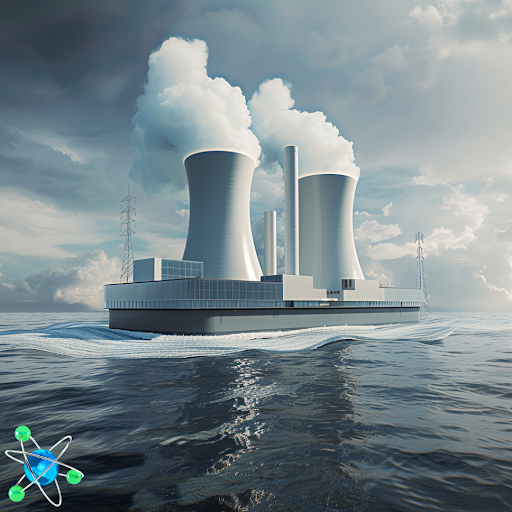
- Recent advancements in nuclear technology have led to the development of floating nuclear power plants, which offer advantages such as autonomous electricity generation for remote areas, desalination capabilities, and reduced environmental impact compared to land-based plants.
- Russia, aiming to expand its nuclear influence, has signed a Memorandum of Understanding with Guinea to explore the feasibility of deploying floating nuclear power plants, potentially addressing Africa’s power supply challenges with its RITM-200 reactors.
- Despite Russia’s proactive approach and existing nuclear projects in Africa and Central Asia, past agreements with other African nations like Uganda, Nigeria, and Rwanda have not always led to concrete developments.
When one thinks of nuclear power plants, an image of a tall gray structure spewing white smoke into the atmosphere often comes to mind. However, recent technological advancements have brought forth the construction of power plants on water. These floating devices essentially provide electricity from offshore, diversifying a country’s energy supply. With Russia seeking to project its influence, Guinea presents an accessible opportunity to expand Russia’s nuclear ambitions.
What are Floating Nuclear Power Plants?
Though unconventional, floating nuclear power plants hold several advantages over their land-based contemporaries. According to FORO Nuclear, these plants are autonomous sites that can generate electricity for remote communities and even utilize desalination techniques to provide drinking water. As they lie on water, they do not require extensive review processes to determine environmental impacts on the surrounding land or displacement of residents. In addition, they are easy to dismantle in the case of a natural disaster or other emergency. Their low environmental footprints are also often compared to the up-and-coming small modular reactors. Russia constructed the first-ever floating nuclear power plant, the Akademik Lomonosov, in 2019 and is looking to build more.
Background: BRICS and Nuclear Interest
BRICS, named after the primary members Brazil, Russia, India, China, and South Africa, is a geopolitical bloc that includes many developing countries. As the association also includes Iran, a considerable U.S. adversary, the nations often ally to contain Western influence and power. With Africa’s economies growing in potential and resources, the region has quickly become a hotbed for activity. Specifically, enterprises worldwide are flocking to Africa to jumpstart nuclear power plant construction in developing countries. The Global Construction Review reported in May that companies from China, France, Russia, South Korea, and the United States were all competing to secure a contract to build Ghana’s first nuclear power plant.
Russia’s Head Start
Russia already has an advantage over other nations in expanding its nuclear influence due to its past and current actions. Business Insider reported that Russia is constructing another power plant unit in Egypt, is finalizing an energy deal with Burkina Faso, and is negotiating with Nigeria and Tanzania, which have both expressed interest in forging closer ties. Moreover, a few weeks ago, Russia announced the construction of Central Asia’s first nuclear power plant in Uzbekistan.
A Giant Gallop into Guinea
CM Engineering reported on Monday that Russia and the Republic of Guinea signed a Memorandum of Understanding enabling Russian energy giant Rosatom to research the feasibility of floating nuclear power plants for Guinean customers. In a statement, the deputy head of Rosatom’s Mechanical Engineering Division, Vladimir Aptekarev, said that the cooperation between the two countries would consist of joint resolutions to develop a sustainable flow of energy for Guineans as an effort to combat Africa’s power supply issues. Aptekarev touted Rosatom’s RITM-200 reactors and their efficiency, highlighting their original purpose to serve as Russia’s nuclear-powered icebreakers. He noted that these reactors require refueling every seven to ten years and are available for export. Despite this announcement, there is no guarantee that Russia will eventually commence construction of Guinea’s nuclear power plants, as recent history has shown that agreements signed with Uganda in 2016, Nigeria in 2017, and Rwanda in 2019 did not yield any progress, including some canceled deals.
